How to draw 5-point perspective
Learn how to draw 5-point perspective.
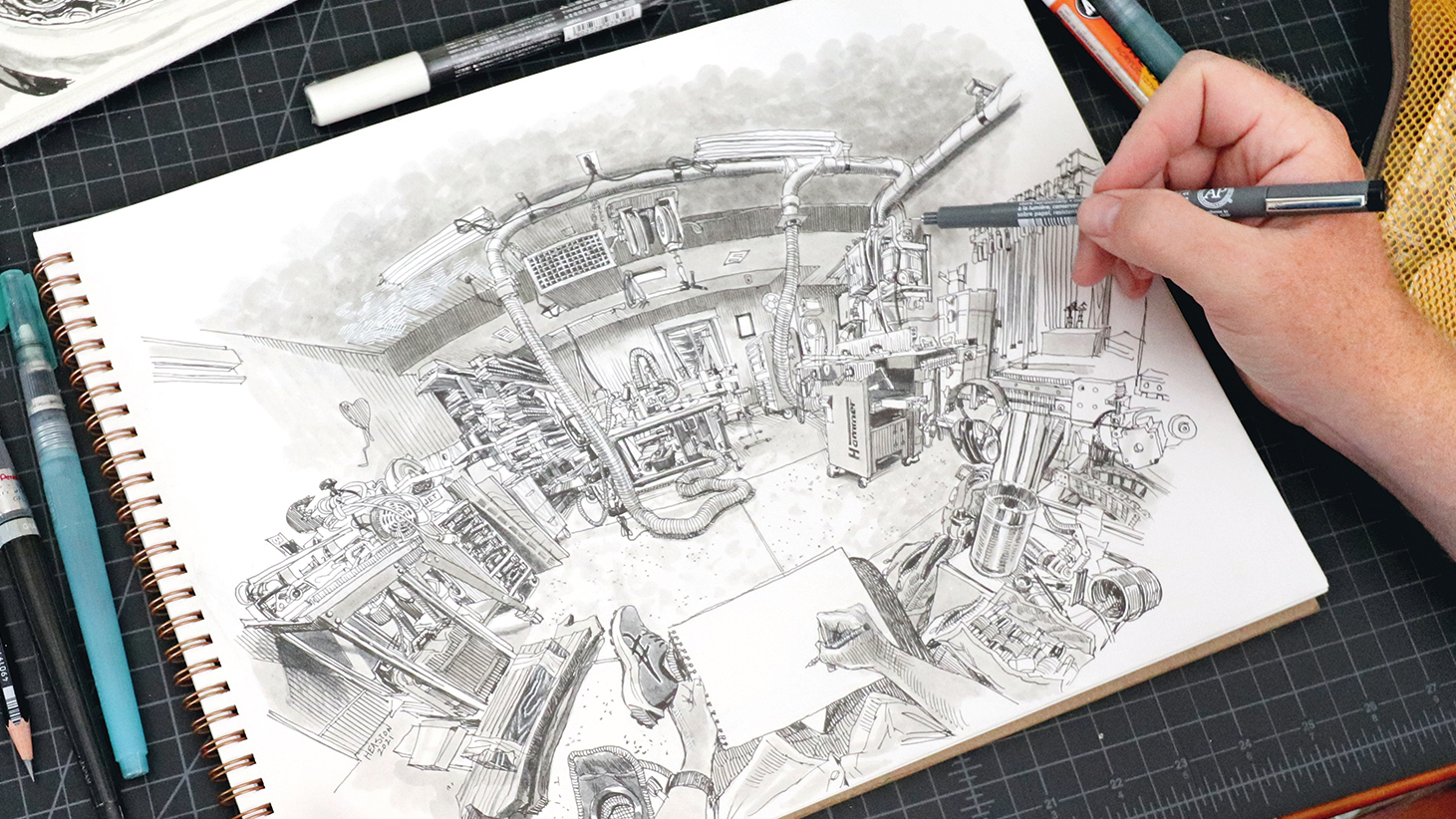
Odds are by now you have encountered 5-point perspective, or wide-angle or fisheye perspective, before. Whether you’ve heard it called fish-eye, bubble art, curvilinear perspective or something else, the idea is the same: to fit a lot of space on the page you have to bend that space a bit. There are a few ways to go about doing that, and I’m going to show you how I like to approach a wide angle drawing or “point of view” sketch in a few simple steps.
Before you get into the training, why not catch-up on some other unique drawing skills? Take a look at these tips for isometric drawing or discover some core skills; Creative Bloq has advice for pencil drawing techniques, too.
Years ago, when I first started doing sketches from life, I was trying to draw a row of buildings from across the street. I wanted to include everything I could see; the whole city block. I sketched the top and bottom edges of the buildings parallel to the horizon but it just didn’t look right.
Then I remembered how buildings in panoramic photos are wider at the centre and they taper down to the right and left as they recede from the viewer. In doing this, the top and bottom edges of the buildings curve to meet vanishing points on the horizon to the right and left. I tried this in my sketch and it worked!
Continue reading to learn how to add as much detail into a scene as you can using the wide-angle perspective drawing technique that emulates how the eye works. Let's get started…
How to draw 5-point perspective
01. Select a suitable space
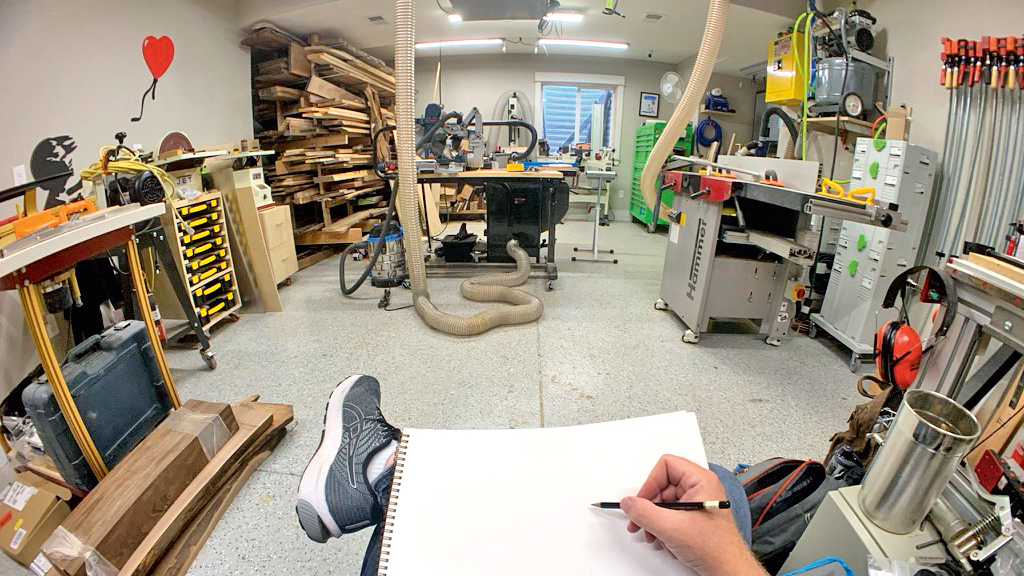
You can do a wide-angle sketch in practically any outdoor or indoor space, but for sheer volume of detail in all directions I love a cluttered interior space. I chose to sketch my friend’s woodworking shop because there was just so much visual information in every corner of the room.
02. Adopt a wide-angle mindset
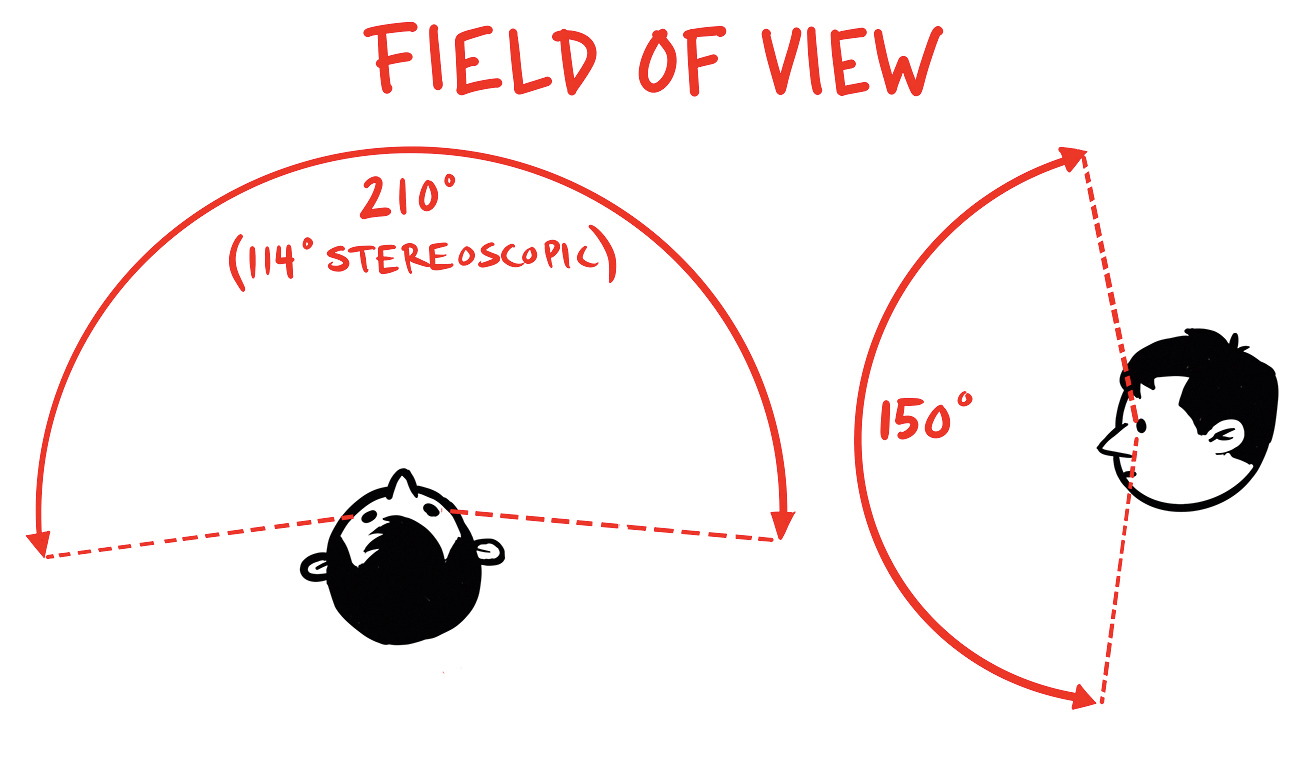
This is the most challenging yet crucial step in tackling a wide-angle sketch from life. We’re used to zooming and cropping to select small portions of our field of view to render on the page. Think “wide” – your drawing will include what’s to your right and left and what’s above and below you.
03. Draw a curved perspective grid
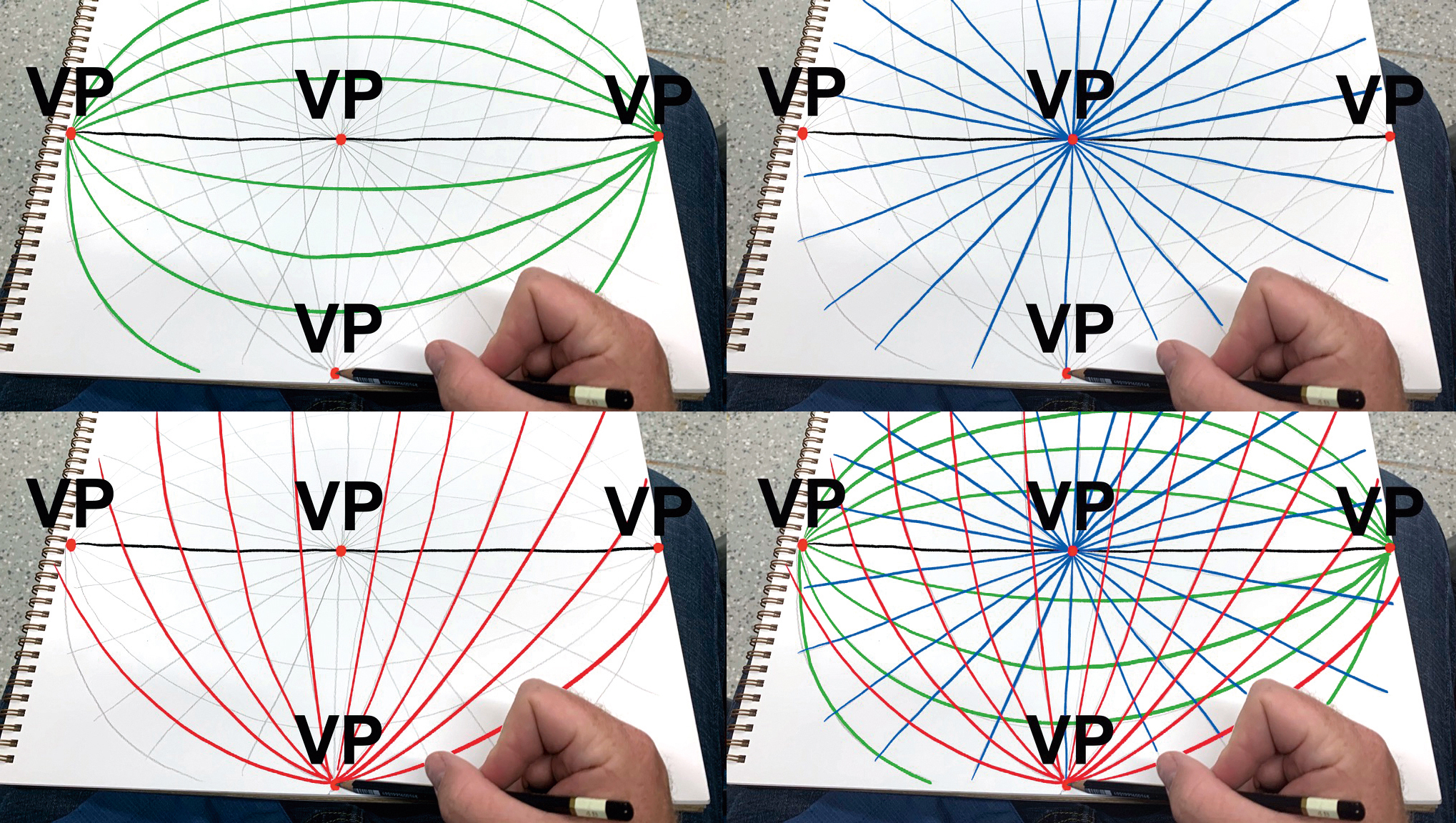
Start with a horizon line just over halfway up the page. Add a centre vanishing point (VP) on the horizon, one VP each on the left and right edges of the paper, and one at the bottom directly beneath the centre VP. Draw increasingly curved arcs connecting the left and right VPs above and below the horizon. Add straight lines radiating from the centre VP and lines gently arcing up and out from the bottom VP.
04. Draw the foreground first
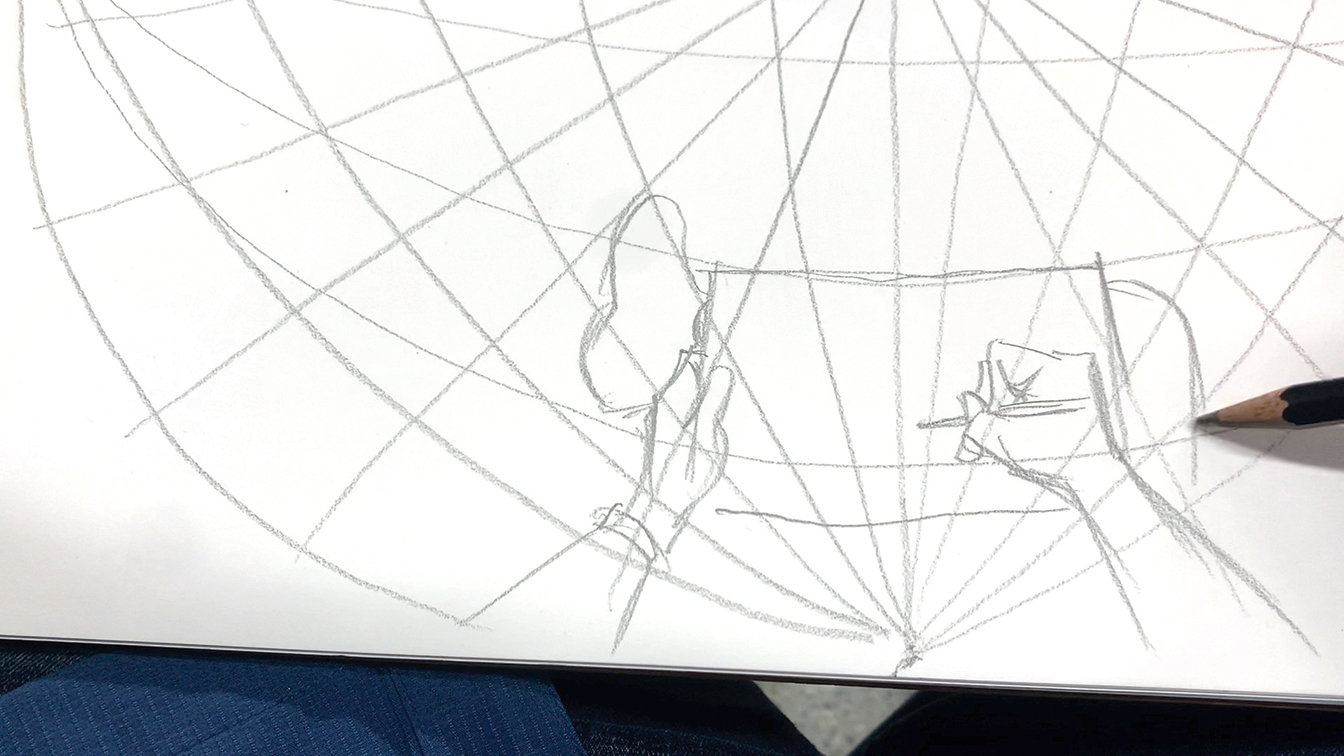
In pencil, loosely sketch your hands, sketchbook or drawing surface, and anything else that might be in your immediate foreground (legs, chair, work surface and so on). The scale you choose for this portion of the drawing is important because this will establish a scale reference for the rest of the drawing.
05. Block in the basic shapes
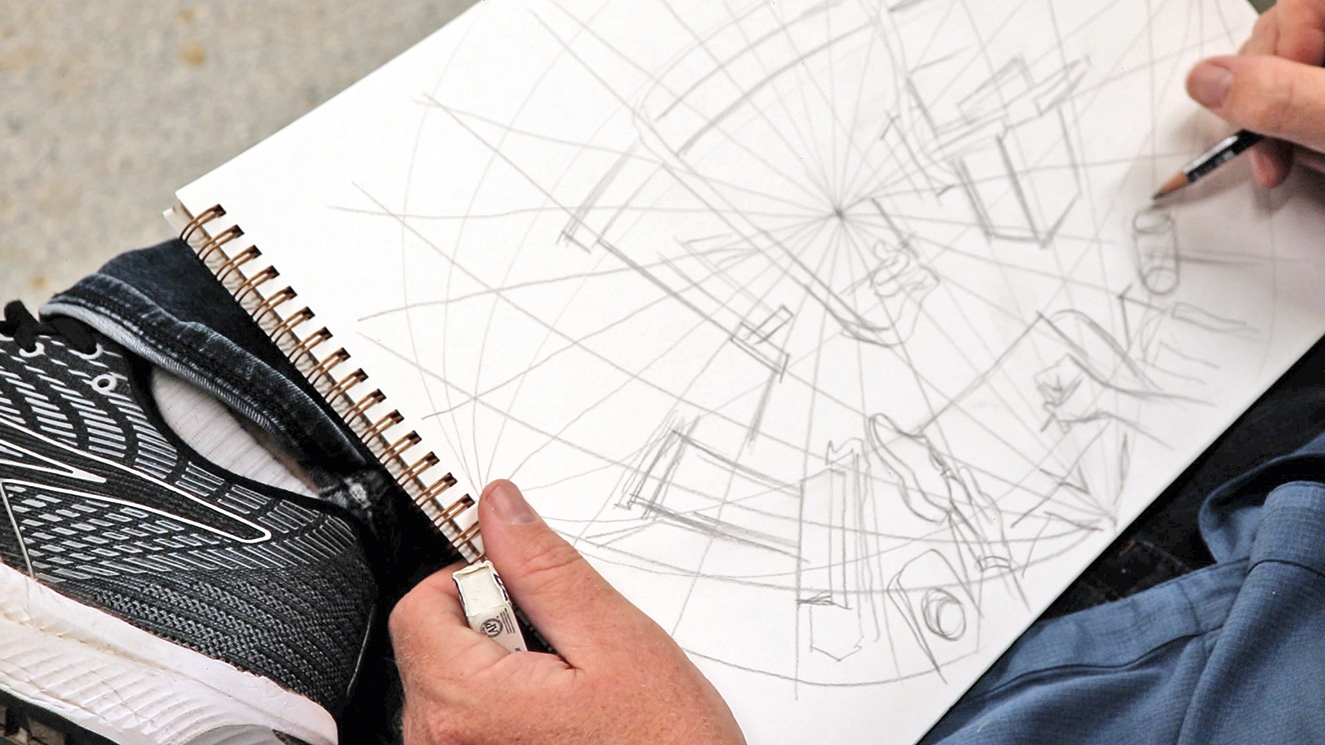
Using the grid as a reference for direction and your foreground as a reference for scale, roughly pencil in the biggest portions of your field of view. I like to work roughly left to right and foreground to background in successive passes, correcting as I see fit to keep everything in proportion.
06. Ink over your line-art
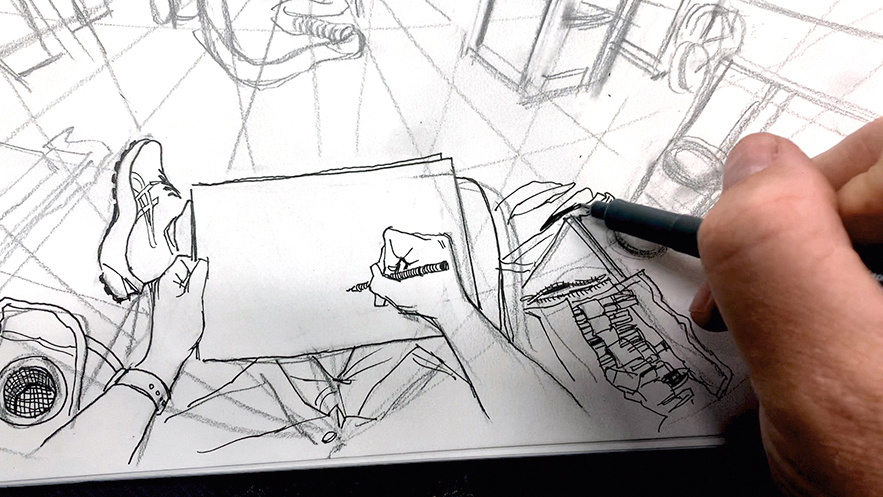
An underdrawing is a rough draft. As you add ink you’ll encounter things you want to change as you go. Feel free to move elements, change scale and proportion, and fix perspective issues right then and there, and add any information that wasn’t in the underdrawing. You’re not beholden to earlier choices that you made in the pencil sketch.
07. Draw the leading edges and surfaces
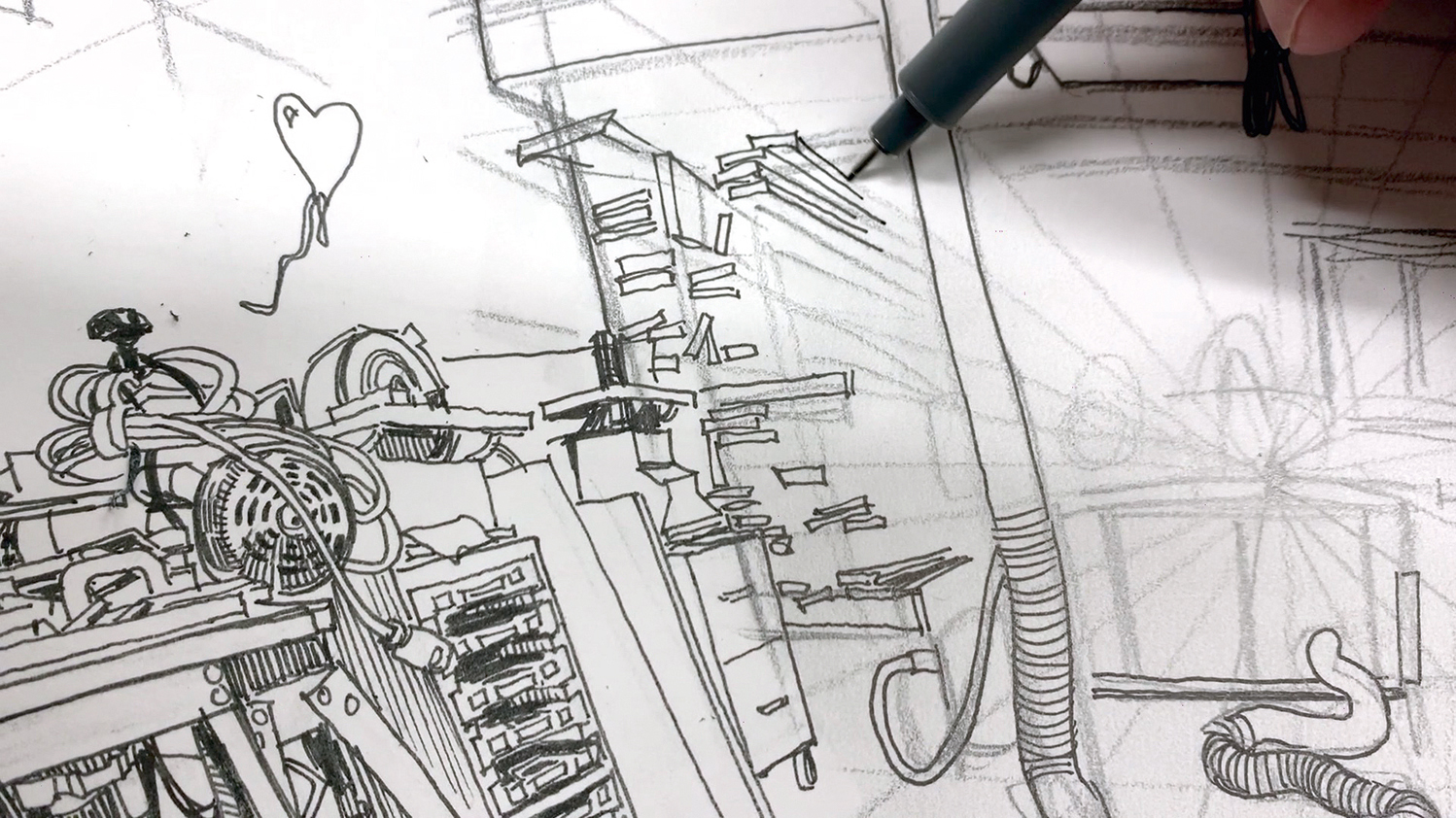
When you have a big, messy visual element like a pile of lumber receding away from the viewer, it can be tricky to know where to start. Keep it simple; address all the nearest surfaces and edges first and then draw the lines receding away toward the vanishing point once the foreground portion is done.
08. Keep drawing and erase as you go
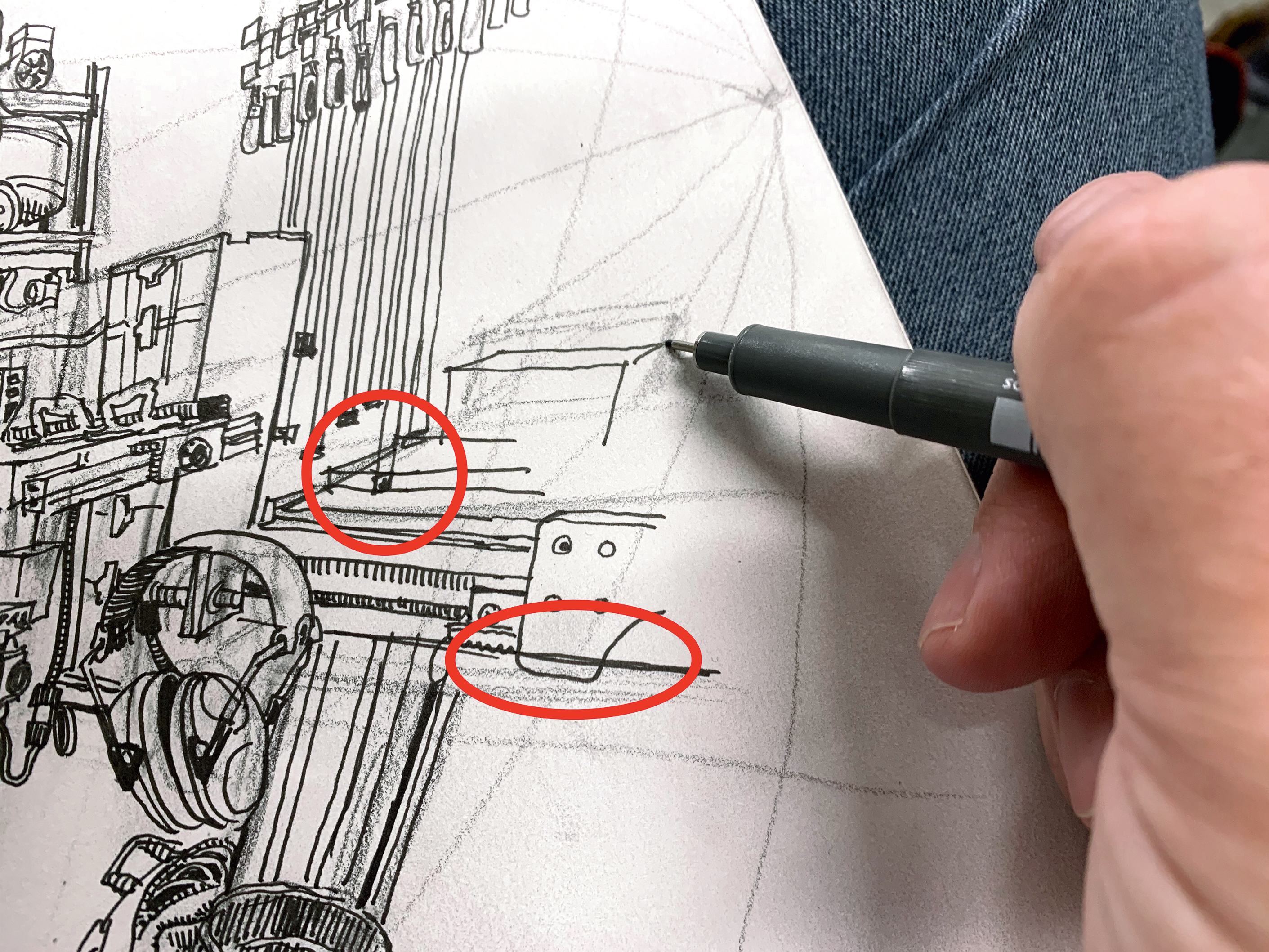
Of course, ink is permanent and you will make mistakes. I make tons of ‘em. Just draw right over them. Of course you should fix the stuff that isn’t working, but don’t worry about the mistakes still being visible. In a wide-angle sketch the visual impact of the whole is greater than the sum of its parts. This sounds obvious, but even I need to remind myself to tidy up now and then so I have a clearer picture of what’s happening in the drawing. Often it’s only after you erase the underdrawing that you can see where additional ink work needs to be done, as well as any mistakes that need addressing.
09. Add values to make it pop
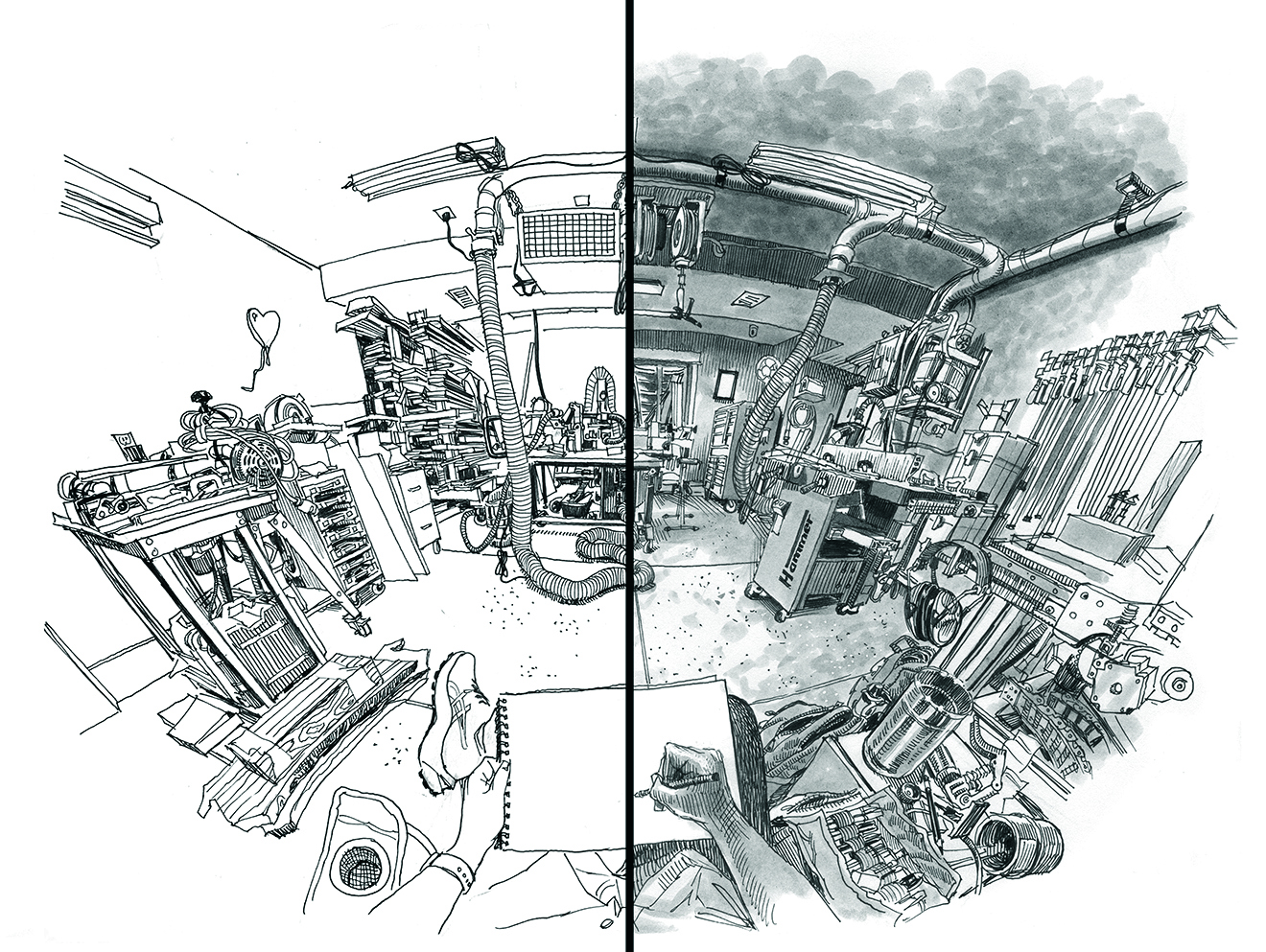
The heavy lifting in a sketch is done when the values are added. I use hatching and ink wash to push contrast and transform the linear forms into something that feels three-dimensional. Don’t be timid here: a good, contrasty drawing is much more appealing than a washed-out, halfway finished one.
10. Ink wash in a brush
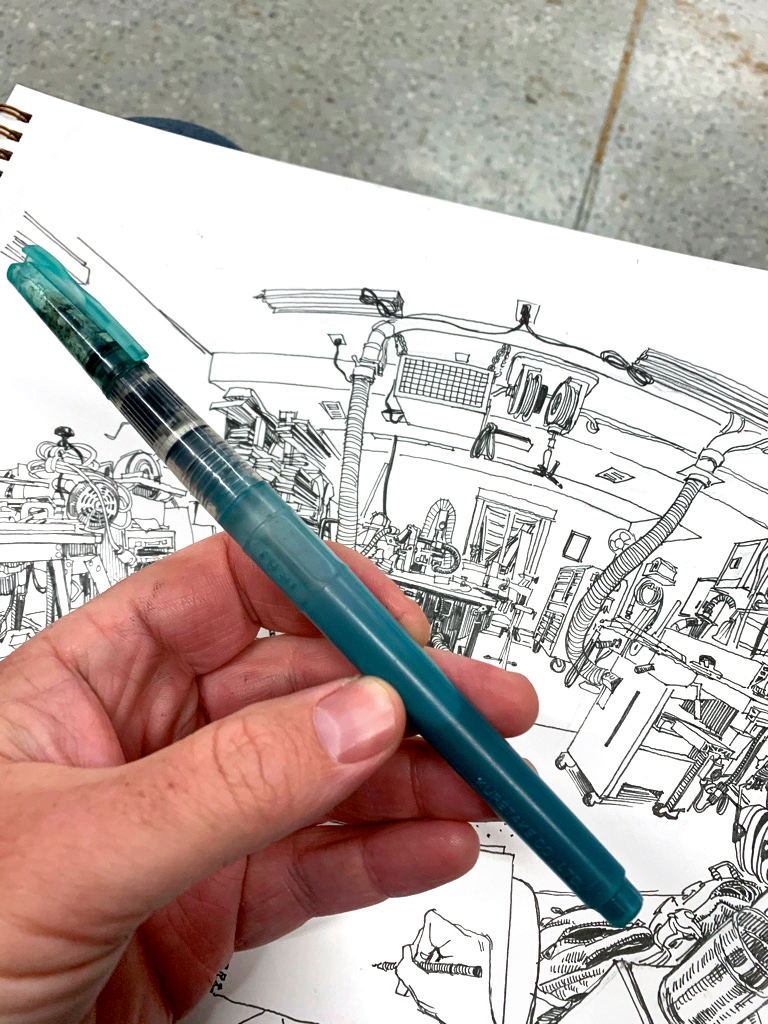
This is a trick I learned from artist Ed Mostly out of Bath, England. I use Noodler’s Lexington Gray fountain pen ink in a Kuretake water brush diluted with water to add grey values. It’s an ingenious way of making ink wash portable and it’s so convenient and mess-free, I use it in my home studio as well.
11. Create shadows with vertical hatching
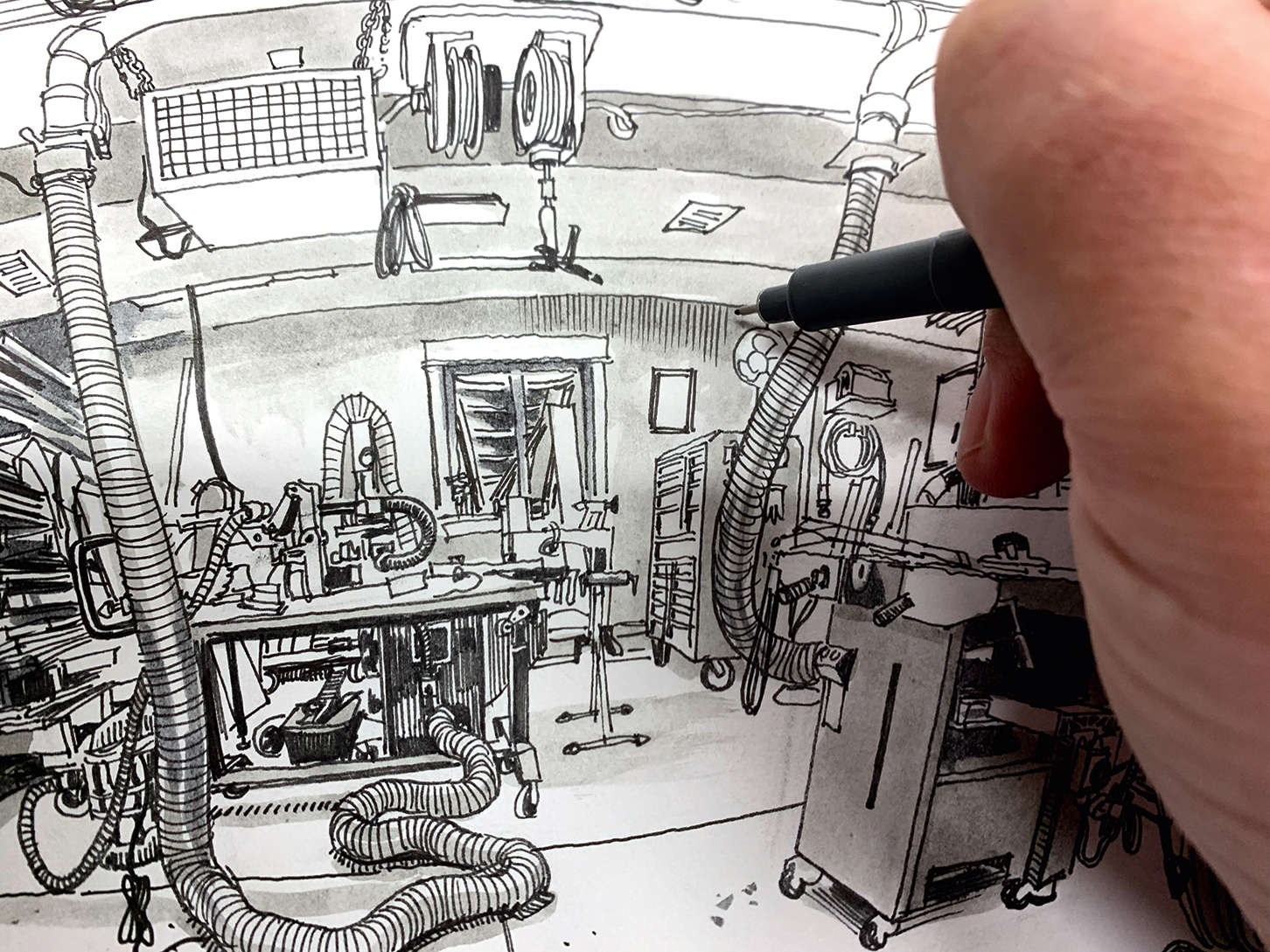
To create a lot of my values I use a mix of hatching and ink wash. Vertical hatching is a good way to lay down a lot of value quickly and it’s hard to screw up. I use the word “vertical” loosely, as I like to keep my hatch marks consistent with the perspective and point toward the bottom vanishing point.
12. Layer your washes
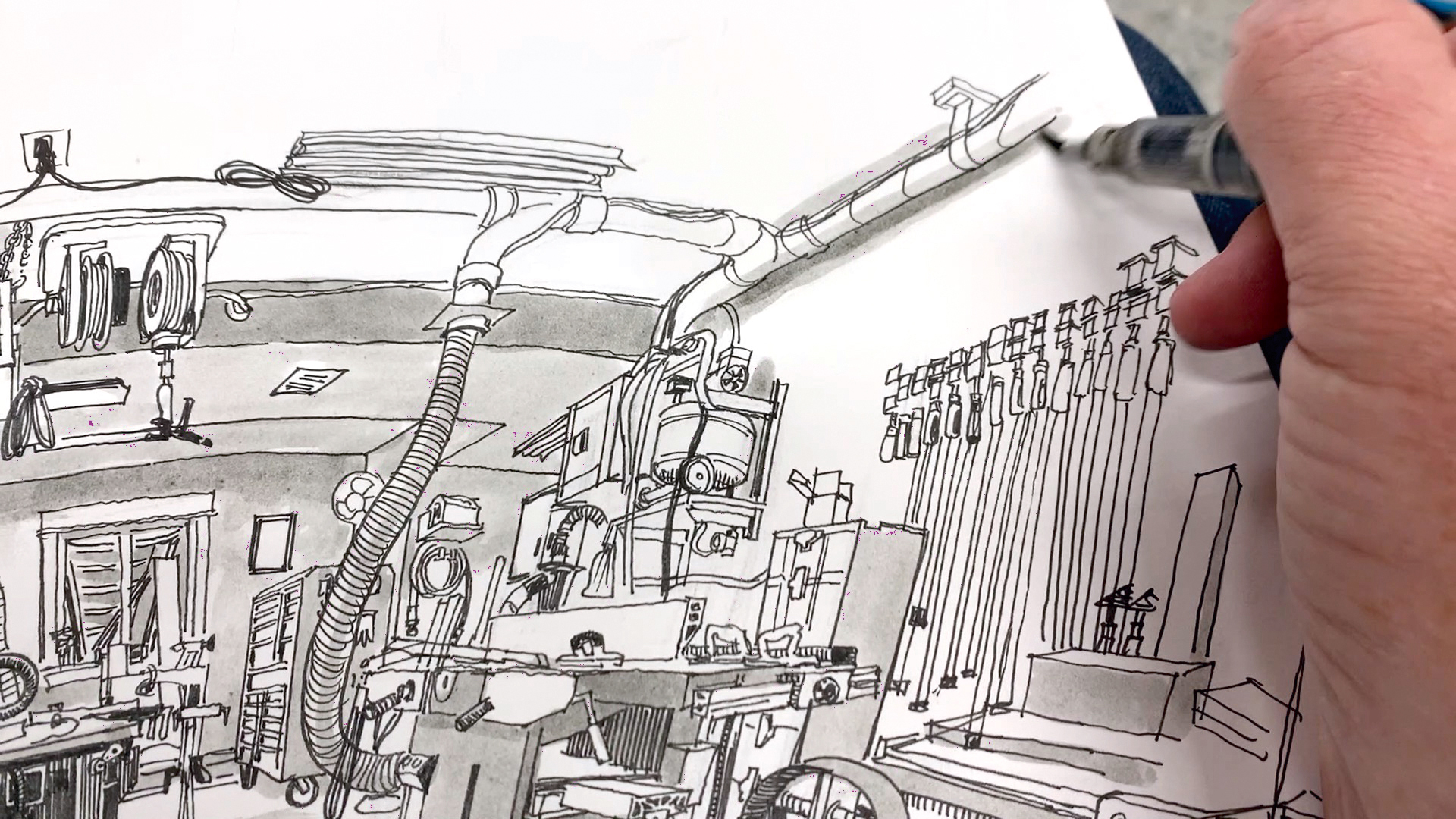
The nice thing about a waterproof ink wash is, once dry, you can apply more wash to get darker. This way you can build up to the darkest values without worrying about overdoing it on the first pass. Keep several water brushes handy with different shades of grey to speed up the process.
13. Dab large flat areas
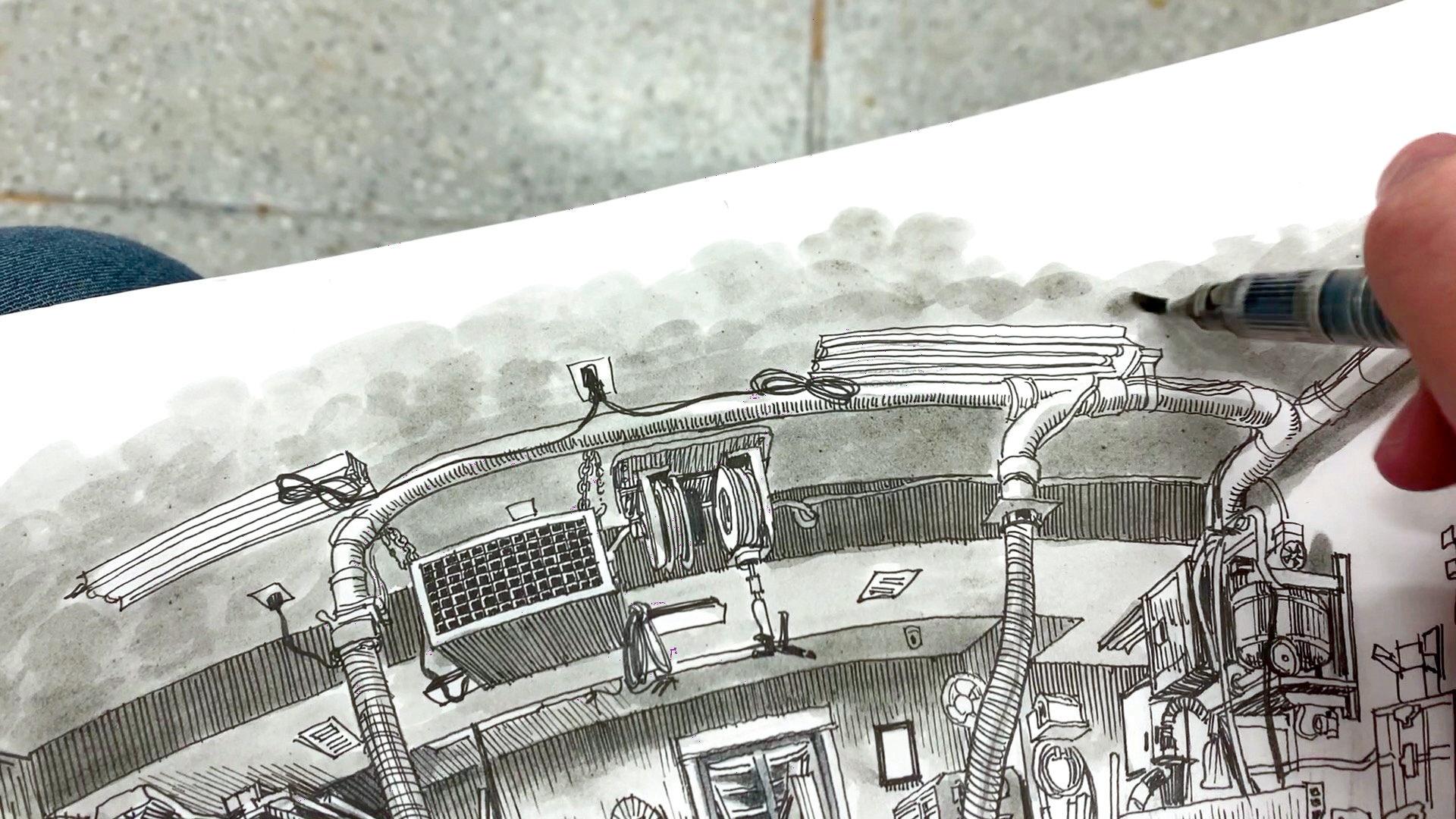
To keep a large flat area from appearing either unaddressed or overworked, attack the space with light dabs, flecks and speckles of wash. You can layer these marks to make areas darker gradually without the frustrating streaks and tide marks that come with trying to achieve a smooth gradient in wash.
14. Use white pen for highlights

It’s a small thing but when done correctly, adding a few white highlights can make a black and white sketch sing. Look for where the whitest whites should be in your drawing (lights, reflective surfaces and so on). Just a couple of subtle white highlights on the rim of this metal canister really make it pop and feel metallic.
This article originally appeared in ImagineFX, the world's best-selling magazine for digital artists. Subscribe here.
Related articles:
Get the Creative Bloq Newsletter
Daily design news, reviews, how-tos and more, as picked by the editors.
- Be inspired by these 22 incredibly realistic pencil drawings
- Get technical: learn how to draw hands
- More advice on how to draw perspective

Thank you for reading 5 articles this month* Join now for unlimited access
Enjoy your first month for just £1 / $1 / €1
*Read 5 free articles per month without a subscription

Join now for unlimited access
Try first month for just £1 / $1 / €1

Paul Heaston is an urban sketcher and illustrator who’s taught workshops internationally on sketching space in wide-angle perspective. You can find his work online to buy and follow him on various online and offline art schools.
